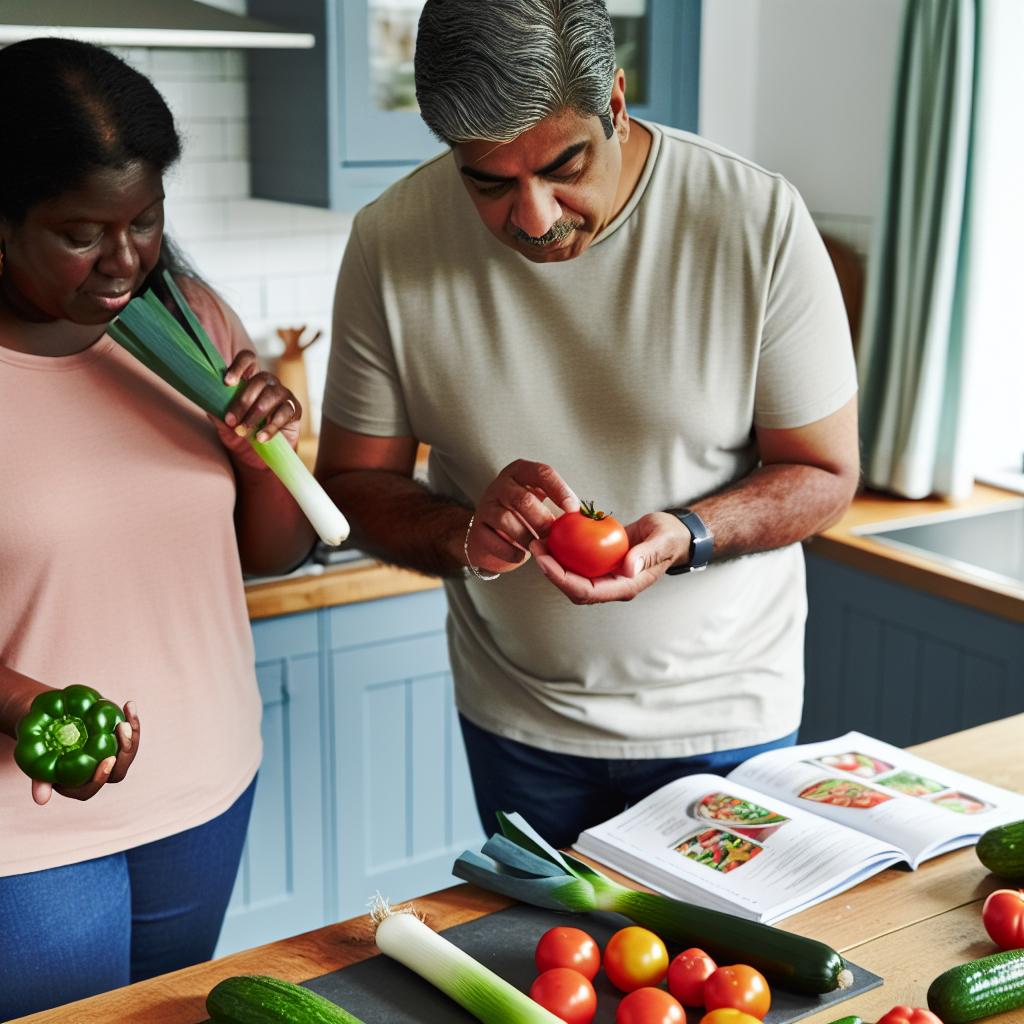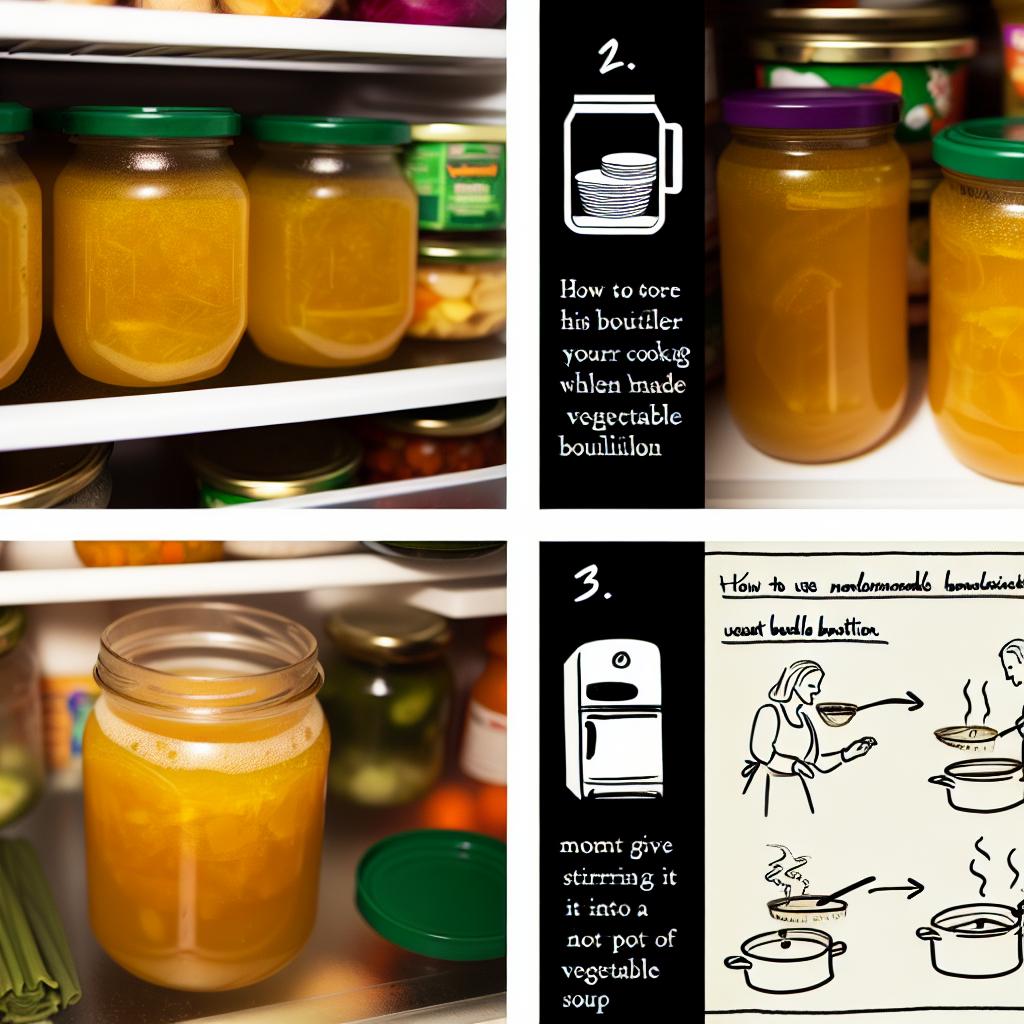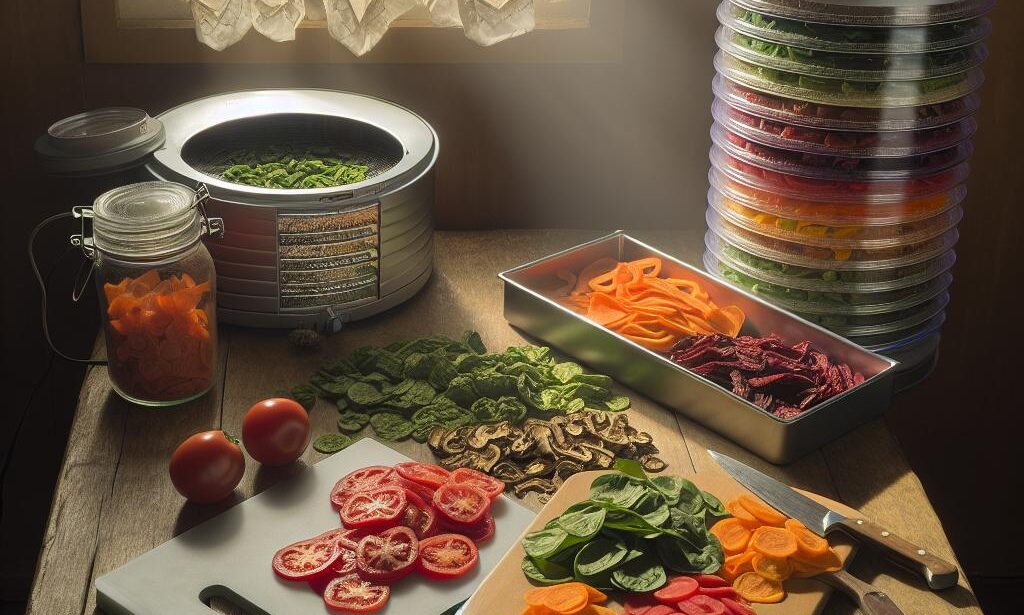Dehydrated vegetable bouillon is a versatile and convenient pantry staple that can add depth and flavor to a variety of dishes. Making your own dehydrated veggie bouillon at home allows you to customize the ingredients to suit your taste preferences and dietary needs. In this article, we will guide you through the process of creating your own dehydrated veggie bouillon, providing tips and tricks along the way to help you achieve a flavorful and nutritious seasoning blend.
Table of Contents
- Choosing the Right Vegetables for Your Bouillon
- Benefits of Dehydrating Vegetables for Bouillon
- Step-by-Step Guide to Dehydrating Vegetables
- Tips for Storing and Using Your Homemade Veggie Bouillon
- Q&A
- To Wrap It Up

Choosing the Right Vegetables for Your Bouillon
When creating your own dehydrated veggie bouillon, it’s important to choose the right vegetables to achieve the perfect balance of flavors. Here are some key vegetables to consider including in your homemade bouillon:
- Onions: Onions add a rich, savory flavor to bouillon and help to enhance the overall taste of the broth.
- Carrots: Carrots provide a touch of sweetness and a vibrant color to the bouillon, making it visually appealing.
- Celery: Celery adds a fresh, herbaceous note to the bouillon and helps to round out the flavor profile.
- Garlic: Garlic brings a pungent, aromatic quality to the bouillon, adding depth and complexity to the broth.
By including a variety of vegetables in your dehydrated bouillon mix, you can create a versatile base for soups, stews, and other dishes. Experiment with different combinations of vegetables to find the perfect blend that suits your taste preferences.
Benefits of Dehydrating Vegetables for Bouillon
Dehydrating vegetables for bouillon offers a multitude of benefits that can enhance the flavor and nutritional value of your dishes. By dehydrating vegetables, you can preserve them for longer periods of time without losing their taste or nutrients. This makes it convenient to have a ready supply of bouillon ingredients on hand whenever you need them.
Another advantage of dehydrating vegetables for bouillon is that it allows you to customize the flavor profile to suit your preferences. You can mix and match different vegetables to create a unique blend that complements your dishes perfectly. Additionally, dehydrated vegetables are lightweight and easy to store, making them ideal for camping trips or emergency food supplies.

Step-by-Step Guide to Dehydrating Vegetables
When it comes to creating your own dehydrated veggie bouillon, the possibilities are endless. By dehydrating a variety of vegetables, you can create a flavorful and versatile base for soups, stews, and other dishes. Follow these simple steps to make your own homemade veggie bouillon:
- Start by selecting a mix of your favorite vegetables such as carrots, celery, onions, and bell peppers.
- Wash and chop the vegetables into small, uniform pieces.
- Spread the vegetables out on a dehydrator tray in a single layer, making sure they are not touching.
- Dehydrate the vegetables at a low temperature (around 125-135°F) for 8-12 hours, or until they are completely dry and crispy.
- Once the vegetables are dehydrated, allow them to cool completely before transferring them to a food processor or blender.
- Pulse the vegetables until they are finely ground into a powder.
- Store the veggie bouillon powder in an airtight container in a cool, dark place for up to 6 months.
Now that you have your own homemade veggie bouillon, you can use it to add depth and flavor to your favorite recipes. Simply add a spoonful of the bouillon powder to soups, stews, sauces, or even sprinkle it on roasted vegetables for an extra burst of flavor. Experiment with different vegetable combinations and seasonings to create your own unique blend of veggie bouillon that suits your taste preferences.

Tips for Storing and Using Your Homemade Veggie Bouillon
Once you have successfully created your own dehydrated veggie bouillon, it’s important to store it properly to maintain its freshness and flavor. Here are some :
- Store in an airtight container: Keep your veggie bouillon in an airtight container to prevent moisture from getting in and causing it to clump.
- Keep in a cool, dark place: Store your bouillon in a cool, dark place away from direct sunlight to preserve its flavor and potency.
- Label and date: Make sure to label your container with the date you made the bouillon so you can keep track of its freshness.
When using your homemade veggie bouillon, remember that a little goes a long way. You can use it to add flavor to soups, stews, sauces, and more. Experiment with different quantities to find the perfect balance for your dishes. Enjoy the convenience and flavor of your homemade veggie bouillon!
Q&A
Q: What is veggie bouillon?
A: Veggie bouillon is a concentrated flavoring made from vegetables, herbs, and spices that can be used to enhance the taste of soups, stews, and other dishes.
Q: Why make your own dehydrated veggie bouillon?
A: Making your own dehydrated veggie bouillon allows you to control the ingredients and avoid additives and preservatives found in store-bought versions. It also allows you to customize the flavors to suit your preferences.
Q: What vegetables can be used to make dehydrated veggie bouillon?
A: A variety of vegetables can be used to make dehydrated veggie bouillon, such as onions, carrots, celery, garlic, and bell peppers. You can also add herbs and spices like parsley, thyme, and bay leaves for added flavor.
Q: How do you dehydrate the vegetables for bouillon?
A: To dehydrate vegetables for bouillon, you can use a dehydrator or an oven set to a low temperature. Simply chop the vegetables into small pieces, spread them out on a baking sheet, and dry them until they are crisp.
Q: How do you store dehydrated veggie bouillon?
A: Once the vegetables are dehydrated, you can blend them into a powder using a food processor or blender. Store the powder in an airtight container in a cool, dry place for up to six months.
Q: How do you use dehydrated veggie bouillon in cooking?
A: To use dehydrated veggie bouillon, simply add a spoonful of the powder to soups, stews, sauces, or any other dish that could benefit from a boost of flavor. Adjust the amount to taste, as the bouillon is quite concentrated.
To Wrap It Up
In conclusion, creating your own dehydrated veggie bouillon is a simple and cost-effective way to add flavor to your dishes while reducing food waste. By following the steps outlined in this article, you can customize your bouillon to suit your taste preferences and dietary needs. Experiment with different combinations of vegetables and seasonings to create a unique blend that enhances the flavor of your favorite recipes. With a little time and effort, you can enjoy the convenience and versatility of homemade veggie bouillon in your cooking. Happy dehydrating!

